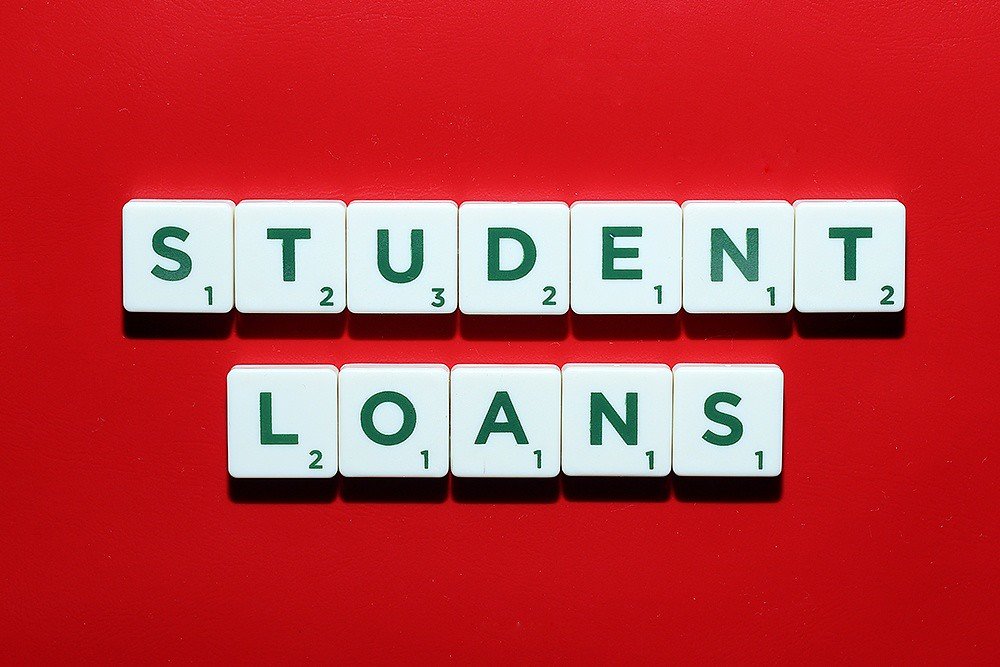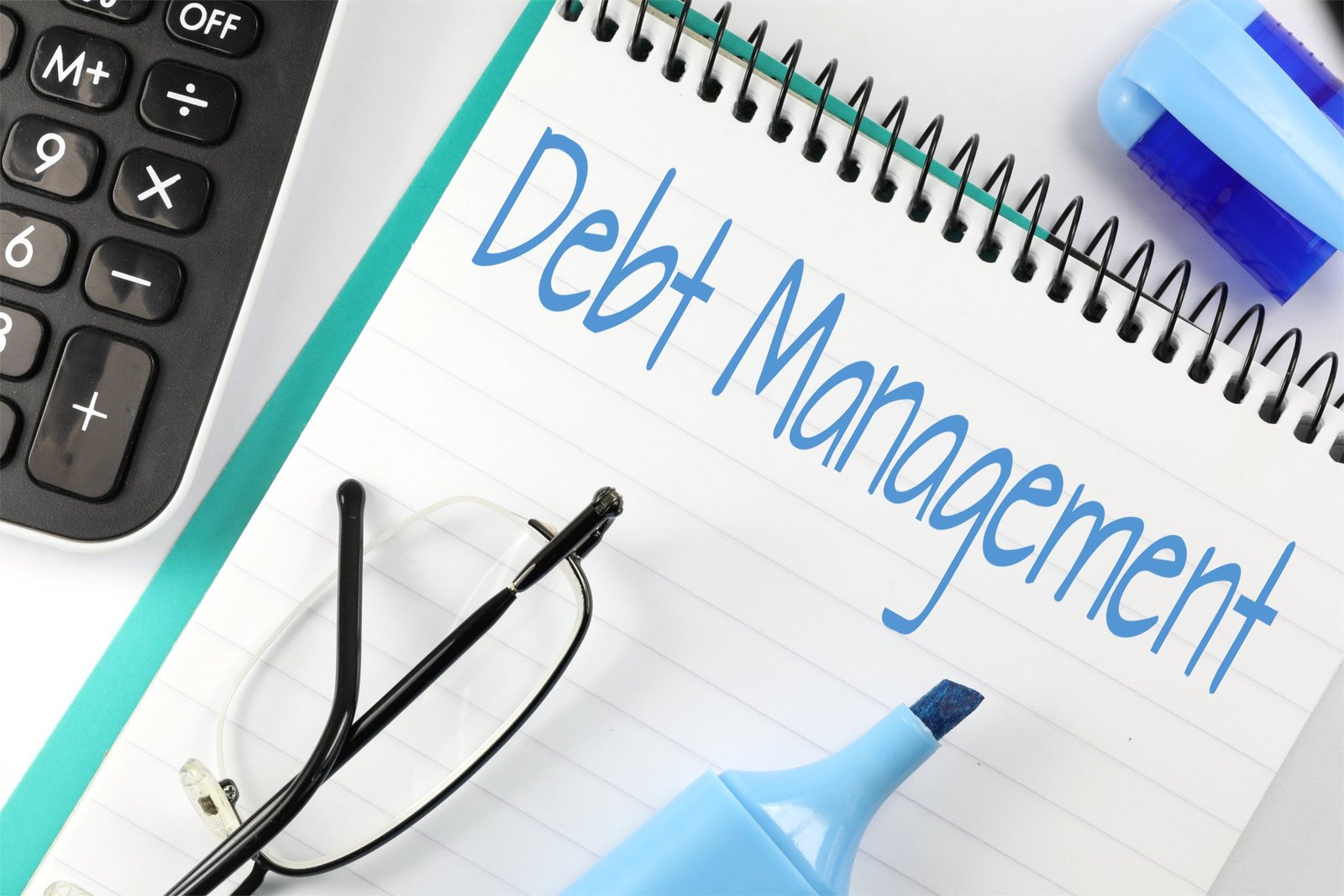Understanding Student Loan Debt
Student loans can make anyone’s head spin, but once you get the hang of the basics, handling them ain’t so bad. Let’s break it down so you’re ready to take control.
Impact of Student Loans
Your student loans can seriously mess with your money game, from buying a place of your own to thinking about grad school (WSAC Loan Education Center). Here’s how they throw their weight around:
- Credit Score: How you pay back your loans is like a report card for your credit. Missing payments just ain’t cool—your score could drop like a rock.
- Housing Choices: Messy credit can make finding a place to rent a real pain.
- Marriage and Family: Loans can play third wheel when you’re figuring out marriage or family plans.
- Career Moves: You might lean toward jobs that pay more than ones you’re passionate about just to keep loans under control.
- Saving and Investing: Loan payments can put a hold on saving for things like retirement or long-term investments.
Common Student Loan Terms
Knowing your way around student loan lingo helps keep those loans in check. Here’s the cheat sheet you need:
| Term | What It Means |
|---|---|
| Principal | The starting amount you borrowed. |
| Interest | The fee for borrowing, shown as a percentage of the principal. |
| Servicer | Think of them as the middleman—handling all the loan stuff, like billing (Federal Student Aid). |
| Grace Period | A break right after graduation when you’re not hounded for payments. |
| Deferment | Hitting pause on payments when you’re, say, back in school. |
| Forbearance | When times are tough, you can slow down or pause the drain on your wallet. |
| Income-Driven Repayment Plan | Adjusts payments according to what you earn and who you’ve got to support (Consumer Financial Protection Bureau). |
| Default | When you ghost on payments, usually after about 9 months. |
Getting a handle on these terms gives you the power to make smart decisions about your loans. For more savvy tips, wander on over to our articles on debt management programs and debt consolidation options.
To stay wise about managing your loans, checking out resources like the Repay Student Debt tool (Consumer Financial Protection Bureau) is super handy. Master the basics, and you’ll be sailing through student loan debt with confidence.
Managing Your Student Loan Debt
Juggling student loans can feel like a circus act, but you’re not walking that tightrope alone. There are some nifty tricks up your sleeve to tame the beast and keep it from devouring your wallet. In this guide, you’ll find repayment options, income-driven plans, and federal programs that can set you on the right path.
Repayment Options
Loans don’t have to be a life sentence—know your way around how you can tackle them head-on. The Federal Student Aid office, waving its magic wand through servicers like Aidvantage, offers several plans that fit your unique situation.
Here’s what you got:
- Standard Repayment Plan: Like a steady ship, this one keeps payments constant over 10 years.
- Graduated Repayment Plan: Start small, like baby steps, and grow every two years.
- Extended Repayment Plan: A mix of fixed or graduated payments spread over a whopping 25 years.
| Repayment Plan | Duration | Initial Monthly Payment | Later Monthly Payment |
|---|---|---|---|
| Standard | 10 years | $393 | $393 |
| Graduated | 10 years | $225 | $675 |
| Extended | 25 years | $172 | $172 |
Need a few more clever ideas? Check out our debt management strategies.
Income-Driven Repayment Plans
For those sticky situations when cash is tight, Income-Driven Repayment (IDR) plans have your back, adjusting your payments based on what you earn and the size of your clan. Some folks even score a monthly rate of zero dollars!
Types of IDR Plans:
- Income-Based Repayment (IBR)
- Pay As You Earn (PAYE)
- Revised Pay As You Earn (REPAYE)
- Income-Contingent Repayment (ICR)
Enter the SAVE plan, rocking the lowest payments and promising quicker forgiveness for smaller loan amounts.
For instance:
| Plan | Monthly Payment (On $50K Income) | Loan Forgiveness Period |
|---|---|---|
| IBR | $200 | 20 years |
| PAYE | $150 | 20 years |
| REPAYE | $175 | 20 years |
| SAVE | Depends | 10-25 years |
Dig deeper into the details with our income-based repayment plans guide.
Federal Assistance Programs
When your budget is as tight as a drum, or you’re just plain puzzled about your best move, federal aid jumps in to lend a hand. Federal Student Aid (FSA) delivers options like deferments and forbearances, great for pressing pause on payments when you hit a rough patch.
- Deferment: Hit pause on payments.
- Forbearance: Ease or delay payments, but watch for that pesky interest sneaking in.
Got a special talent or profession? You might just hit the jackpot with these perks:
- Public Service Loan Forgiveness (PSLF): Calling all public servants!
- Teacher Loan Forgiveness: For the unsung heroes teaching in low-income schools.
- Military Service Loan Forgiveness: Honoring our active-duty warriors.
| Program | Max Forgiveness | Who’s Eligible? |
|---|---|---|
| PSLF | Full balance | 120 monthly payments while in public service |
| Teacher Loan Forgiveness | Up to $17,500 | 5 years in a low-income school |
| Military Service Loan Forgiveness | Changes | Active service duty |
Got questions? Our debt consolidation options guide is your go-to.
By breaking down these options, managing student loan debt can become something you master, not fear. For those interested in conquering other financial nuisances, check out our guide on dealing with credit card debt.
Strategies for Paying Off Student Loans
Dealing with student loans can feel like wrestling with an octopus, right? But don’t worry. There are plenty of ways to tackle that debt and ease the financial squeeze.
Laying Low in the Grace Period
The grace period is like a mini vacation from loan payments right after you graduate, leave school, or fall below half-time enrollment. It’s your golden ticket to get organized before the repayment rollercoaster starts. Use this precious time to:
- Map out your finances.
- Scope out repayment plans.
- Stash away extra cash to kickstart your payments strong when the grace is over.
Getting Cozy with Automatic Debit
Automatic debit is a nifty trick in your loan repayment toolkit. Once you’re set up, each monthly payment leaves your bank account without you lifting a finger, keeping you safe from late fees and possibly snagging you a lower interest rate. Many loan folks toss in a 0.25% rate deduction for automatic debitees. Here’s a quick glimpse:
| Benefit | Details |
|---|---|
| On-Time Payments | Keep late fees and credit woes at bay |
| Interest Rate Cut | Nab a 0.25% savings from some loan servers |
Reach out to your loan handler for more deets on how to hop onto automatic debit and relish the perks.
Giving Bonus Payments a Whirl
Throwing extra cash at your student loans can reel in that debt faster than you’d think. Here’s how to weave these extra payments into your money habits:
- Shoot Higher than the Minimum: Always aim to drop more than the monthly minimum. This shrinks your principal swiftly and lowers the overall interest.
- Windfall Advantage: Funnel tax refunds or work bonuses into your loans (Student Aid).
- Keep the Pay Train Rolling: Even if your future bills are covered, keep paying to speed up freedom from debt.
| Scenario | Regular Payment | Extra Payment | Fast-Forward Result |
|---|---|---|---|
| Regular | $150 | – | 10-year payoff |
| With Extra | $150 | $50 | 8-year payoff |
| Tax Refund Magic | $150 | $1,000/year | Lowers total cost |
By leaning on these options, you’ll chip away at that student loan mountain quicker and with more ease.
For more handy tips on keeping debt in check, check out debt management strategies and other savvy debt management programs. If you’re also swamped with credit card debt, don’t miss our guide to tackling credit card debt. Dive right in—your future self will thank you!
Specialized Loan Forgiveness Programs
Who doesn’t wanna see those hefty loans disappear? Specialized loan forgiveness programs can chip away at your student debt, lightening the load just for doing what you love or your bit for society.
Teachers Loan Forgiveness
The teachers out there, shaping young minds in schools that need it the most, this one’s for you. If you have been teaching in a low-income school or service agency, the Teachers Loan Forgiveness program’s got your back. Imagine knocking off up to $17,500 from your loan after just five years of full-time teaching.
What You Need to Do:
- Teach full time for five full school years straight.
- One of these years should be after ’97-’98.
- Serve in a low-income elementary or secondary school or service agency.
The Perks:
| Loan Type | Max You Can Get Forgiven |
|---|---|
| Subsidized/Unsubsidized Loans | $5,000 – $17,500 |
Got questions on keeping your finances in check? Swing by our page on debt management programs.
Public Service Loan Forgiveness
If you’re in public service, give yourself a pat on the back. The Public Service Loan Forgiveness could clear that loan after you’ve clocked in 120 payments—yep, that’s a decade of doing good under a fitting repayment plan with a qualifying employer.
Here’s What’s Needed:
- Work for the government or a nonprofit, it can be local, state, or tribal—you name it.
- Be in it full-time, doing your bit for the public.
- Direct Loans are a must. If you’ve got other federal loans, merge ’em into a Direct Loan.
- Make 120 payments that qualify under the plan.
The Sweet Deal:
- Whatever’s left of your Direct Loans after those payments? Gone.
Need to stay on top of your repayment game? Peek at our efficient debt repayment tips.
Military Service Loan Programs
A salute to our vets and active-duty folks! If you’ve served, there’s loan relief waiting for you. Recognition for your service comes with the bonus of easing that student debt.
What’s On the Table:
- Military Service Deferment
- Put loan payments on pause during active duty.
- Veteran’s Total and Permanent Disability Discharge
- Have a service-connected disability? Say goodbye to the rest of your loan balance.
- Public Service Loan Forgiveness (PSLF)
- This applies here too if you meet the criteria. Double bonus!
Requirements:
- Show proof of your military gig.
- Each program’s got details—check ’em out.
What You Get:
- Pause on payments, smaller monthly checks, or freedom from the loan.
Catch up on current moves and solutions for fresh updates on repayment schemes and extras.
Leverage these loan forgiveness options to let you focus on your life and career, instead of worrying about your student debt. Got more questions about managing that debt? Visit our debt management strategies and debt consolidation options pages.
Challenges and Legal Battles
Dealing with student loans can feel like you’re constantly jumping through hoops. As you try to get a grip on your debt, the twists and turns of legal changes and debt relief programs can be a real game changer.
Impact of Legal Decisions
Legal stuff can really swing the options you’ve got for tackling and paying back your student loans. Picture this: the Supreme Court shutting down the government’s big plan to wipe out a chunk of student loan debt. This led to the birth of the SAVE plan, which is supposed to make paying back loans a little less painful. SAVE—standing for Saving on a Valuable Education—stepped in to replace another plan and brought with it perks like better income protection and checking out your income in a less stressful way (source: Consumer Financial Protection Bureau).
But life ain’t that simple. SAVE itself ran into a heap of legal trouble. Attorneys general from Kansas and Missouri decided to sue over some bits of the SAVE plan, leading to a temporary freeze on parts that were still on the drawing board (source: NASFAA).
| Legal Event | Impact |
|---|---|
| Supreme Court says “nope” to debt cancellation | Enter the SAVE plan |
| Kansas and Missouri throw down with lawsuits | Stopped some SAVE goodies from rolling out |
| SAVE plan kicks into gear | Waving goodbye to about $1.2 billion in loan debt |
Evolving Student Debt Relief Policies
Student debt relief ideas keep popping up like new streaming series, aiming to cut borrowers like you some slack. There’s been some buzz around plans like Income-Driven Repayment (IDR) setup. These plans are about syncing your loan payments with what you actually earn, so maybe you get away with less pocket pain or even some forgiveness down the road. (source: Consumer Financial Protection Bureau).
Folks are saying the SAVE plan is the cheapest IDR ever. How’s that? Well, it lets more of your cash stay in your wallet when they’re figuring out what you owe each month. Plus, it knocks out negative amortization, meaning no more worrying that your loan balance is getting bigger because you can’t keep up with the interest (source: NASFAA).
Feeling stuck with student loans? Check out some federal assistance programs and scope out other ways to tame student debt.
Keeping up with what’s changing in legal and policy circles can really help you steer your student loan debt in a saner direction. It’s all about paving a smoother path for your money game down the line.
Current Initiatives and Solutions
Tackling student loan debt can feel like you’re wandering through a maze without a map. Getting a grip on the latest buzz can make managing those pesky loans a tad easier.
Issue of Debt Cancellation
In August 2022, the Biden administration made some noise with a plan to wipe out up to $20,000 in student loans for folks who qualified income-wise. A whopping 26 million of you jumped on that bandwagon, and 16 million got the go-ahead before the rug was pulled out from under it by legal experts. Fast forward to June 2023, and the Supreme Court slammed the brakes with a 6-3 vote, leaving many borrowers and financial aid folks scratching their heads. Check out more details from NASFAA.
| Initiative | Description | Status | Approved Borrowers |
|---|---|---|---|
| Debt Cancellation Plan | Up to $20,000 off student loans | Supreme Court said: Nope | 16 million |
The legal mumbo jumbo around this didn’t exactly make life easier for you. But hey, they’ve thrown in some temporary fixes and other plans like the SAVE plan to ease off the pressure.
Updates on Loan Repayment Plans
With the cancellation plan facing a brick wall, they rolled out the SAVE (Saving on a Valuable Education) plan. This replaced the old REPAYE plan with snazzy features: more income protection, a reduced look at discretionary income, no more negative amortization, and quick loan forgiveness for small debts. It kicked off in July 2024, and by January 2024, it was already shaving off nearly $1.2 billion in loans. Want to dig deeper? NASFAA’s got you covered.
| Feature | Description |
|---|---|
| Income Protection | Boosted income cover |
| Discretionary Income | Lighter assessment on this |
| Negative Amortization | Kissed goodbye |
| Early Loan Forgiveness | For small loan balances |
However, the SAVE plan’s not out of the woods yet. Kansas and Missouri’s legal eagles threw a wrench in the works, introducing more challenges. These legal wrangles froze more than just assets, forcing a pause on paper applications for Income-Driven Repayment (IDR) plans. Borrowers under the SAVE umbrella had to hang tight in an interest-free administrative forbearance mode. The twists keep coming, right? Read up more about this at NASFAA.
Looking for some rock-solid ways to keep your student loan situation from going haywire? Jump into our section on debt management strategies. Keeping up with policy changes is your ticket to making smart decisions about options like debt consolidation and wrestling with credit card debt.
Keep your finger on the pulse of these updates to stay ahead in this ever-turning carousel of student loan management.
Tips for Efficient Debt Repayment
Dealing with student loans got you feeling a bit like you’re stuck in quicksand? Well, take a breath. These handy tips might just guide you through the sticky mess and help manage that student loan debt somehow.
Using Tax Refunds
Got cash coming back from Uncle Sam? Put it to work tackling those loans (Student Aid). Instead of binge-spending, throw that extra dough straight into the debt pile. This way, it’ll chop down your loan balance without causing a mess in your usual expenses. Plus, don’t skip the fact – student loan interest might even bump up that refund, giving you a bigger whack at that debt with zero harm to the wallet.
Here’s a little table to show how using tax refunds can make a decent dent:
| Tax Refund Amount | Loan Balance Before | Loan Balance After |
|---|---|---|
| $1,000 | $10,000 | $9,000 |
| $2,500 | $15,000 | $12,500 |
| $3,500 | $20,000 | $16,500 |
Career Specific Loan Help
Got a gig in teaching or the public sector? It might just come with some sweet perks for loan-repaying. There’s a bunch of job-specific programs that’ll knock out chunks of your debt if you fit the bill.
- Teachers: Are you shaping young minds? Then check out the Teacher Loan Forgiveness Program. It offers up to $17,500 in forgiveness on certain federal loans. A nice little pat on the back for those school days.
- Public Service Prodigies: If your paycheck comes from a qualifying employer, the Public Service Loan Forgiveness (PSLF) Program might zero out your debt after 120 monthly payments. Just keep those pay stubs handy!
- Military Heroes: Your service might just earn you reduced interest rates and some other neat benefits under the Servicemembers Civil Relief Act (Consumer Financial Protection Bureau).
Snag Available Forgiveness Options
Don’t leave cash on the table. Give those loan forgiveness plans a good look—they might chop down your debt pretty nicely. Here’s a quick rundown:
- Income-Driven Repayment (IDR) Plans: Tailor your monthly payments to match your paycheck and family size. After 20 or 25 years of shelling out dough, what’s left gets wiped clean (Consumer Financial Protection Bureau).
- Public Service Loan Forgiveness (PSLF): Already mentioned up top, but worth another nod because, hey, total forgiveness after 120 payments is nothing to sneeze at.
- Teacher Loan Forgiveness: Yup, same program as mentioned, offering up to $17,500. You can dig more over on our Teacher Loan Forgiveness page.
These moves can smooth out your path to squashing that student loan debt. Be nosy – peek into all those debt management programs and debt consolidation options till you hit the jackpot that matches your financial puzzle.
Future of Student Loan Debt
Thinking about the future of student loans can feel like staring into the abyss. To lighten the mood and keep you informed, let’s break it down into two main chunks: communication headaches and the tangled web of loan management. Grab a snack—this is gonna be insightful and maybe just a tad humorous.
Communication Challenges
Alright, so keeping up with all the chatter about student loans is like trying to follow a soap opera: you blink, and suddenly everyone’s in a love triangle—or in our case, a debt triangle. A huge bump in the road is simply knowing what’s going on with your loans, especially when policies are forever playing musical chairs. Studies have shown that folks with smaller debts—think less than $10,000—are waving the default flag more often than not (Pew Trusts). These folks tend to plop other expenses like rent or groceries at the top of their list, leaving loans to chill at the bottom.
Here’s the kicker: clear communication from your loan company could prevent chaos. But apparently, that’s too much to ask. Many borrowers complain it’s like pulling teeth to get straight info. So it’s on you to eyeball those loan statements and tug on your servicer’s sleeve for updates, especially when perks like reduced interest rates could be knocking at your door thanks to the Servicemembers Civil Relief Act (Consumer Financial Protection Bureau).
Navigating Loan Management
Untangling student debts can feel like wrestling a bear—a financial bear that messes with your life choices. Loans can shake up big decisions like where you live, who you marry, or whether to haul yourself back to school (WSAC Loan Education Center). Those hefty undergrad loans might put a damper on renting that city loft you’ve been eyeing or knocking down your credit score.
The rules of the game keep changing, so being in the know is your best bet. Just look at the Biden administration’s free-money offer back in August 2022 when they announced loan forgiveness up to $20,000 for some folks. It sounded great until a few legal glitches landed it in the Supreme Court’s wastebasket in June 2023 (NASFAA).
To claw your way through this mess, try some debt management strategies. This could mean pooling your loans together or jumping on debt management programs. And hey, if juggling student loans alongside credit cards and mortgages sounds like a circus act, considering debt consolidation options might help simplify things.
| Key Areas | Impact of Student Loans |
|---|---|
| Housing | Renting or buying struggles from credit score mess |
| Marriage | Money issues turning dreams to nightmares |
| Graduate School | Debt pile-up camping on education plans |
| Long-term Savings | Retirement fund hanging out with cobwebs |
The biggest trick is keeping alert and ready to tackle that loan monster. Scoping out different plans and strategies could ease your mind and wallet, helping you make savvy decisions that lead to the financial future you actually want.






